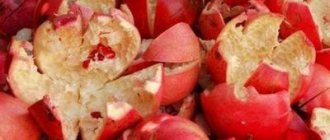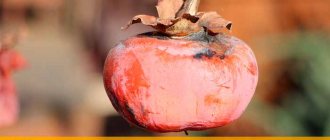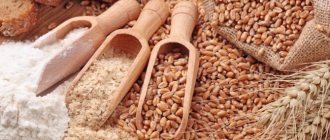Symptoms
If you remember what to eat after poisoning and vomiting, you will quickly get back on your feet after any digestive disorder. The main thing is to follow certain rules. The first signs of poisoning appear within two to twelve hours.
Low-quality products, or more precisely, the pathogenic microorganisms contained in them, begin to release toxins within half an hour after they end up in the stomach. Intoxication is accompanied by a significant release of salt and fluid into the esophagus. This leads to irritation of the vomiting center and increases peristalsis of the gastrointestinal tract. Diarrhea and vomiting appear. As a result, the body loses a lot of nutrients and fluid.
With food poisoning, there is a danger that toxins will intensively destroy the layers of the mucous membrane of the intestines and stomach. This threatens weakening of the body, loss of proteins, and pathological increase in metabolism. Due to damage to the protective layer of the intestine, toxic substances are quickly absorbed into the blood, which leads to even greater intoxication. In addition to vomiting, nausea and diarrhea, symptoms of poisoning may include dizziness, abdominal pain, headache, chills, and weakness.
It is worth remembering that any food can cause food poisoning. The disease develops especially unpredictably when poisoned by canned meat, fish (including salted fish) and mushrooms. In this case, you should immediately seek qualified help from a doctor. After the necessary tests, the doctor will be able to determine the cause of intoxication and the degree of damage to the body.
What can you eat after vomiting: diet and nutrition rules
Every person experiences nausea accompanied by vomiting from time to time. To cope with the consequences and prevent complications, it is necessary to identify the source of the unpleasant condition. Vomiting may result from:
- overeating;
- unbalanced diet;
- poisoning with low-quality foods and drinks;
- toxicosis of pregnant women;
- infectious diseases;
- disorders of the digestive system;
- diseases;
- alcohol poisoning;
- chemical poisoning;
- reactions to medications;
- allergic reaction to products;
- nervous conditions.
The causes of vomiting are different, often caused by poisoning or improper functioning of the digestive system. Associated symptoms of poisoning are diarrhea, fever, abdominal pain, weakness. Vomiting and diarrhea are protective reactions of the body. The processes allow you to remove low-quality products and bacteria.
Do not interfere with stomach cleansing. To avoid new urges, you should eat with caution after vomiting. There is no need to starve - do not worsen the condition. For the first 4-6 hours, it is better to abstain from food so that the stomach can rest. If you eat after cleansing the body, the patient needs to regain strength.
First steps after vomiting
When vomiting, the body loses fluid and minerals - first of all, it eliminates dehydration. Water will help normalize stomach function. When the urge to vomit does not continue after the first portion, treatment begins.
To replenish your water balance, you need to drink clean water, weak tea without sugar, and juice diluted with water in large quantities. You should not drink a lot of liquid at once; filling the stomach with water will lead to a new attack. It is better to drink little by little often.
Doses are not prescribed for adults; drink as much as your body requires.
Rice water soothes the stomach. Mineral water helps restore the water-salt balance. There are special solutions containing microelements. It is recommended to drink solutions two hours after vomiting. Carbonated drinks will make you feel worse. It is necessary to give up milk. Alcohol should not be consumed.
Rules for eating after vomiting for adults
It is better to eat when fluid balance is restored. It is advisable to wait 6 hours. If the patient is not hungry, food is replaced with warm drinks. When the need for food arises, they get used to regular food in stages.
What to eat
After poisoning, you can eat crackers, cookies without additives, oils, semi-liquid foods - porridge with water, mashed potatoes, jelly. You can eat chicken soup and noodles without fat. Fatty foods cause flatulence. If you feel nauseous, you can limit yourself to drinking.
After two days, if you don’t feel sick, add an egg, low-fat yogurt, low-fat cottage cheese, and boiled or steamed vegetables to your diet. Weakness is a consequence of vomiting. To recover, the body needs protein. Boiled chicken without skin, fish, steamed meat are excellent sources of protein and microelements. Vitamins and minerals will be replenished with bananas and baked apples.
What not to eat
You should return to your usual diet gradually. It is better to exclude foods that irritate the stomach for 2-7 days. Food should be easily digestible and help restore microflora. The diet consists of avoiding the following categories of food:
- Fried and greasy. Enzymes that promote the breakdown of fats are produced poorly due to disruption of the stomach.
- Spicy and generously seasoned. Seasonings further irritate the digestive system.
- Sour. Increased acidity will make you feel worse.
- Smoked and canned.
- Fresh fruits and vegetables.
- Sweets: chocolate, cream and butter-based desserts, jam.
Butter, dairy products, fresh or pickled tomatoes, sauces (mayonnaise, ketchup) can cause repeated vomiting that occurs after nausea. Coffee, cocoa, and fresh baked goods are also undesirable.
Restoration of the body
During the entire recovery period, the drinking regime is observed. Add berry decoctions and compotes. Decoctions of herbs with anti-inflammatory properties (chamomile, St. John's wort) and apple juice will help normalize the state of the digestive system. Make sure that the temperature of food and drinks is optimal.
Hot or cold causes stomach irritation. The duration of the diet depends on how you feel. The adult himself decides after how many days to return to normal nutrition. After severe vomiting, the recovery period takes up to three weeks. Products must be freshly prepared.
Do not eat store-bought offal or soups from a package; artificial products will worsen the condition.
Vomiting in children
Poisoning in children occurs frequently. Usually the reason is due to poor quality products. Vomiting in a small child must be treated with special attention and proper care must be provided.
If the case is not isolated, is accompanied by diarrhea and high fever, or the baby complains of pain, consult a doctor. In an adult, poisoning is much easier than in a child.
The child’s body is not strong enough and is unable to cope with the infection on its own. Medications may be required.
Drinking regime
The first thing to do during and after vomiting is to provide the child with plenty of fluids. Drinking regime is important, as for adults: water helps remove toxins faster. A water-salt solution will help get rid of vomiting. The volume of liquid is calculated based on the child’s weight - 150 ml per kilogram. Young children are given a teaspoon of water at room temperature every 10 minutes.
Nutrition
When the nausea has stopped, it is better not to eat right away. It is recommended to wait until the next day. Products should be selected that are easy to digest. Infants do not need any other nutrition; mother's milk normalizes the activity of the stomach. The mother must follow a diet. It is necessary to choose foods that are easier to digest.
From the age of one year, start feeding porridge with milk diluted with water, gradually introducing baby cottage cheese, vegetable puree, and juices into the diet. At first, it is recommended that older children be given rice and buckwheat porridge with water. Oatmeal is fine. The porridge should be boiled and unsweetened. If desired, instead of sugar, add dried fruits, focusing on your well-being.
The following foods will improve stomach function:
- banana puree (bananas are an essential source of microelements);
- baked apples remove toxins and reduce nausea;
- decoction of dried fruits;
- boiled vegetables (carrots, broccoli);
- plain yoghurts;
- non-acidic kefir.
Products should not irritate the gastric mucosa; it is better to prepare semi-liquid food and grind solid food using a blender. The food is cooled to a comfortable temperature. If the child is not hungry, there is no need to force him to eat. The body will independently determine the optimal amount and frequency.
After one or two days, you can diversify your diet with low-fat dishes, boiled or steamed. It is extremely important to replenish the animal protein content. Liquid chicken broth perfectly soothes the mucous membrane and saturates the body with nutrients. Gradually, the menu includes stewed vegetables and familiar dishes.
It is recommended to consume food in small portions, but often. Gradually portions and intervals are increased.
Additional actions
Recovery lasts up to three weeks, depending on the duration of vomiting. During this period, the body needs vitamins and minerals. The doctor may prescribe medications high in vitamins A, B and C to improve metabolism and increase the body's resistance. In case of prolonged vomiting, a vitamin complex is required.
To avoid re-poisoning, check the expiration date and quality of the products. If the diet does not help, the nausea does not go away, you need to take medicine and call a doctor. After prolonged vomiting, severe dehydration occurs.
Prolonged vomiting can lead to serious consequences, chronic diseases, and death. You should pay close attention to your health and determine what is causing your prolonged illness.
The doctor will prescribe treatment based on the specifics of the disease.
Source: https://GastroTract.ru/simptom/toshnit/chto-mozhno-est-posle-rvoty.html
Features of the disease
If food poisoning is mild, then you can cope with it yourself. In this case, it is important to do a gastric lavage and take sorbents (at least activated carbon), as well as Regidron. After the symptoms of intoxication have stopped, it is very important to start eating right. It is not recommended to take fixatives without a doctor's prescription. If the poisoning is caused by E. coli, diarrhea is one of the body's most effective ways to get rid of toxins.
If you take medicine “for diarrhea,” the body will begin to accumulate toxins, since the intestines will not be cleared of the masses that accumulate in it. Please note that E. coli multiplies very quickly. In this case, there is a sharp rise in body temperature to 39-40 degrees. In such a situation, treatment must be continued in a hospital. Droppers with medications will help eliminate the causative agent of the disease and relieve the symptoms of poisoning.
In case of poisoning, you need to empty your stomach. This is especially important if there is no vomiting, but nausea is present. Then you need to drink at least 1 liter of water (you can add a little potassium permanganate to it so that the solution becomes slightly pink) and induce vomiting by pressing on the root of the tongue with your fingers. This is all unpleasant, but the stomach must be freed from low-quality food.
Features of preparing food for a child after vomiting
It is important what to feed a child with diarrhea and vomiting, and how to prepare food.
It should be as easy, safe, and useful as possible:
- Food should be prepared without spices. A moderate amount of salt is allowed; it retains water in the body, which is necessary for recovery.
- You cannot fry foods. The optimal processing method is boiling, baking, steaming. In this case, heat treatment should be sufficient. The child's body is weakened and susceptible to pathogens.
- Before feeding your baby fruits or vegetables, you need to wash them well. It is recommended to remove the skin.
- In the first days, the products are crushed using a blender or other available method.
- The temperature should be comfortable and close to body temperature.
Important! Dishes must be fresh.
Drinking regime
After poisoning, you do not need to eat anything on the first day. As practice shows, it is difficult to find a patient who strives to eat when he has severe abdominal pain, nausea and vomiting. Because of these symptoms, many people develop an aversion to even the smell of food. During this time, you need to drink a lot of fluid, but you need to do it correctly.
Portions of water should be small. Experts recommend using the drip drinking method - several small sips every five to ten minutes. This will restore the water balance to a stable level. It is not recommended to drink a lot at one time, as this may cause vomiting.
Boiled water with fresh ginger or a slice of lemon, mineral water without carbon, chamomile decoction, rosehip infusion, dried fruit compote are suitable for drinking. Symptoms of intoxication are also well relieved by green or weak black tea. The main thing is that they are freshly brewed.
In addition to replenishing lost fluid, the body needs to restore the mineral balance that has been disrupted due to indigestion, vomiting and excessive sweating. The drink should be moderately warm.
Many healthy drinks in this state can be prepared at home. One of them is nutritious and healthy rice water. To prepare it, boil a tablespoon of rice grains in a glass of water. As soon as the rice is boiled, strain the broth, add a little salt and cool to a comfortable temperature. This remedy helps when you feel hungry after an upset stomach. Moreover, it is able to absorb toxins in the intestines, stops diarrhea, but does not have such a strong fixing effect as drugs.
We'll tell you how to cook jelly from starch and frozen berries. The drink comes out with a very bright taste. You can drink it both cold and hot. For eight servings we will need the following amount of ingredients:
- 250 g cherries.
- 250 g frozen strawberries.
- Two liters of water.
- Four tbsp. spoons of granulated sugar.
- Two to two and a half tablespoons of potato starch.
Pour 1.85 liters of water into a saucepan, put the berries there and bring the mixture to a boil. As soon as this happens, reduce the heat. Boil the berries for five minutes and then remove them using a slotted spoon. Pour sugar into the pan.
At this time, dilute starch in the remaining water (cold). Gently mix the berry infusion, and then pour the diluted starch into it in a thin stream. Cook for another five minutes, stirring constantly. Now you know how to cook jelly from starch and frozen berries.
Nutrition after vomiting in the first days
It would be correct to find out what to feed your child after vomiting, depending on the time that has passed since it. On the first day, the body is not ready to accept heavy food. But gradually you need to restore your previous nutrition. This must be done correctly so as not to disrupt digestion.
Important! If there is bile or blood in the vomit, you should immediately consult a doctor!
First day
The child's nutrition after vomiting on the first day, when the symptoms of poisoning have not yet passed, should be minimal. The baby will not show initiative in eating, since there will be no appetite. While observing the principles of nutrition on the first day, you need to take into account the baby’s wishes.
How to feed your baby on the first day of poisoning:
- For the first day, be sure to maintain the norm of drinking water. Vomiting and diarrhea help remove pathogenic organisms from the body. At the same time, a person loses a lot of fluid and substances necessary for normal functioning. Doctors say that no liquid can replace clean drinking water. But children willingly drink juices and compotes. It is not recommended to give sugar on the first day. A rosehip decoction that is not sweet is suitable; it will also relieve nausea.
- In the first 6-7 hours, the minor should drink a moderate amount of water. Only then slowly reduce it. It is recommended to add salt to your drink.
- It is on the first day that Regidron or analogues are used.
- After 6 hours, you can include food in your diet. There should be 5-7 receptions, but in small portions.
- The baby is given biscuits, cream soup, and a baked apple. It is forbidden to eat raw vegetables, thick cereals, and dairy products. You can't drink fruit juices, even natural ones.
Prohibited Products
In the first day after poisoning, it is recommended not to eat anything at all, and when the condition improves, switch to a diet menu.
It is important to give the body the opportunity to cleanse itself of toxins and the affected organs to recover. How long will this take? Will the poisoning develop into a disease of the digestive system? The recovery process depends on what foods you exclude from the menu. It is recommended to form a diet of neutral-tasting dishes. It is desirable that they be in puree or liquid form.
In the first week after poisoning, you should strictly exclude the following foods:
- Fried foods.
- Spicy and salty foods.
- Dairy products.
- Milk (this is true even for children).
- Legumes.
- Fatty foods.
- Mushrooms.
- Garlic, onion, red pepper, radish.
- Fast food and semi-finished products.
- Drinks that are too sweet and sour.
- Strong tea and coffee.
- Ice cream, pastry cream, chocolate.
- Alcohol.
Even if the symptoms of poisoning are already behind you, it is worth observing such restrictions for at least the first week. You should also not skip meals or eat too large portions. It is not recommended to eat food typical for feasts and picnics.
General nutritional recommendations for intoxication
In case of poisoning, you must adhere to the following rules:
- Do not eat for 12–24 hours. Fasting is required in the acute period, when vomiting, diarrhea and pain are observed.
- Avoid prohibited foods (cause fermentation, irritate and injure the gastric mucosa).
- Eat food in soft, liquid or mushy form. Provides mechanical sparing of the mucous membrane. After vomiting and other symptoms disappear, you can eat porridge, lean soups with vegetables, casseroles, some cereals (oatmeal, semolina), steamed cutlets and meatballs, chicken broth, jelly, natural butter, soft-boiled eggs, steamed omelettes, dried bread and crackers. Gradually, fermented milk products, boiled vegetables and lean meat are introduced into the diet. You can include marmalade in your daily portions.
- Eat small meals, 5–6 times a day. Slimy soups are drunk in small portions.
- Don't overeat.
- Avoid alcoholic drinks.
- Don't skip meals. Products should be consumed at intervals of 3–3.5 hours.
- Drink more fluids. Necessary to eliminate hypovolemia and dehydration. In case of poisoning, it is important to focus on drinking, followed by activated charcoal to remove toxins from the body.
- Eat right for at least a month.
Diet
Now we’ll tell you in more detail what you can eat after poisoning and vomiting. When the symptoms of intoxication are behind you, your appetite will return. Doctors advise starting with vegetable broth. The first portion should be no more than half a glass.
From what you can eat after poisoning and vomiting without fear, cereal and vegetable soup is especially recommended. They need to be cooked without frying onions. Frozen or fresh vegetables such as cauliflower, zucchini, potatoes, and carrots are suitable. Here's what to eat after poisoning and vomiting to quickly restore your health.
It is very important to compensate for the lack of vitamins in the body. To preserve them better, place vegetables in boiling water rather than cold. White bread toast or crackers can be added to the soup.
Of what you can eat after poisoning and vomiting, experts always mention liquid porridge. With their help, you can quickly start the digestion process. It can be buckwheat or oatmeal cooked in water. This dish will help quickly restore the mineral balance in the body. The cereal needs to be boiled. To make it better absorbed, it is crushed in a blender.
If your digestive system is already functioning normally, diversify your diet with low-fat fish and meat dishes, such as casseroles and meatballs. What should an adult eat after poisoning and vomiting? It should be noted that the diet should contain enough vitamins. It is worth remembering that potatoes boiled in their jackets retain vitamin C and potassium. It is better to eat it with a little salt, but without vegetable oil. Eggs are rich in vitamin E and can be used to make an omelette in the oven or steamed.
All meals in the diet should be nutritious enough to give the body the strength to recover. However, it is better to avoid heavy, fatty and high-calorie foods. For an adult, the nutritional value of the diet per day should be about two thousand calories.
Why is it important to follow a diet after vomiting?
The reflex of returning food that was previously consumed occurs due to the presence of internal or external irritants that negatively affect the functioning of the abdominal organs responsible for the digestion, breakdown and assimilation of what is eaten. Therefore, by provoking vomiting, the body thus independently cleanses itself of pathogenic microflora, toxins, spoiled food and other harmful substances that, for one reason or another, have entered the stomach. It is extremely important to follow a diet and organize your nutrition correctly to ensure rapid restoration of the gastrointestinal tract after vomiting.
It is necessary to select exactly those products and dishes prepared on their basis that will not irritate the already inflamed gastric mucosa, but will ensure the saturation of the tissues of the internal organs with nutrients to quickly stabilize their work. Without dietary nutrition, the pathological condition and periodic vomiting will return again and manifest themselves in the form of a relapse.
It is also very important to drink as much water as possible so that pathogenic microflora and toxic compounds that disrupt the functioning of the digestive system are washed out.
Juices
Over time, homemade vegetable and fruit juices are allowed to be added to the diet menu. However, it is advisable to dilute them with water. You can serve biscuits and dry bread with tea and other drinks.
Throughout the diet, the patient's drinking regime should remain plentiful. Please note that with a large loss of fluid, the blood begins to thicken. Therefore, you should take restorative drinks within a week after poisoning. To avoid swelling, the total amount of fluid during the day should not exceed two liters.
An adult must follow a special diet after food poisoning for 5-10 days. During this time, the functioning of the gastrointestinal tract will finally improve, and digestion will return to the required physiological norm.
Foods that cause nausea
In practice, experts have identified a number of products that can stimulate signs of food poisoning, including vomiting and diarrhea:
- Caffeinated and alcoholic drinks can only worsen dehydration.
- Spicy and fatty foods that a weakened body is not able to digest, which can result in further attacks of vomiting and diarrhea.
- Foods that contain a high concentration of fiber, for example, citrus fruits, legumes, cereals, nuts, which lead to overload of the digestive system.
- Apple and pear juices should not be consumed if a person is sensitive to natural sweeteners, as this can worsen diarrhea.
- First of all, you should pay attention and exclude products that contain lactose, since it is this element that the body is not able to digest at the time of an eating disorder. Therefore, all dairy products can only increase diarrhea and vomiting.
In addition to the above, it is recommended to avoid canned food, smoked products and sausages, pastries, eggs, seafood and fast food.
Often, the cause of nausea and vomiting can be poor-quality or very fatty foods. They may also contain bacteria that can disrupt the intestinal microflora and harm the body.
What you can eat when you feel sick, with caution or avoid it altogether:
- mushrooms;
- fermented milk and dairy products;
- pastries and cakes;
- unwashed fruits and vegetables;
- fish and seafood;
- eggs;
- canned goods, including homemade ones.
When experiencing nausea, adults and children need to follow a diet that will help cope with unpleasant situations and alleviate the patient’s condition.
Recommendations for children
A very common occurrence is food poisoning in a child. A fragile child's body is more susceptible to infections than an adult.
A baby's diet may include almost the same dishes that he is used to in normal times. But it is better to refrain from sweets. What to eat after poisoning and vomiting for a child? We can recommend tea with biscuits. Half a cup of vegetable broth or half a serving of oatmeal will help. You can't eat a lot at once.
Children remain at high risk of food allergies after poisoning. Therefore, for the first time after recovery, it is recommended to give up citrus fruits, sweets, tomatoes, and chocolate.
The menu for a child after poisoning and vomiting may contain chicken meatballs and steamed meatballs, egg omelet, fish soufflé. Beef, pork, sausages and sausages should be excluded from the diet for two weeks. Please note that children often experience constipation after poisoning. To avoid them, you can give grated beetroot salad once a day.
You need to introduce vegetables into the menu when there is no longer any bowel disorder. Exceptions can be made for potatoes boiled in their jackets. It can be eaten without restrictions.
Eating while vomiting
Poisoning is not the only cause of the gag reflex. But in childhood, in most cases, it is precisely this that leads to food rejection and diarrhea.
What else causes not eating in childhood:
- intestinal infections;
- gastritis, ulcer;
- reflux;
- head injuries, high intracranial pressure;
- sun and heatstroke;
- appendicitis;
- CNS diseases;
You need to know what you can eat after your child vomits. But already during it, help should be provided.
Nutrition during an acute condition:
- An important component of first aid is maintaining a drinking regime. Diarrhea and fever increase fluid loss from the body. The balance needs to be restored. However, you should not force your baby to drink large amounts of water. This will cause more vomiting. You need to drink often and in small sips. The optimal break between drinking liquids is every half hour.
- Too cold or hot liquid is poorly absorbed by the body. Water from the refrigerator or just prepared tea will not save you from dehydration.
- Don't make your tea sweet. Sweets should be avoided.
- In addition to water, it is useful to drink unsweetened dried fruit compotes.
- Regidron or Humana helps restore balance.
Important! It is not recommended to feed your baby while vomiting.
Vegetable soup
As an example, here are a few recipes. What do doctors recommend for adults and children to eat after poisoning and vomiting? Cooking such food is not very difficult. The main thing is to choose only fresh products and be sure to wash them. For example, you can make light vegetable soup with chicken broth. To do this, take the following components:
- 350 g chicken meat.
- A small head of cauliflower.
- Carrot.
- Onion.
- Two potatoes.
- Two bay leaves.
- A bunch of parsley.
- Five peas of allspice.
- Salt (to taste).
Wash the chicken, cut it into pieces and place in a pan. Add to it a bay leaf, a peeled onion, and peppercorns. Fill everything with water and put it on the stove to cook.
While the broth is boiling, peel the carrots and potatoes, wash and cut into cubes. Separate the cauliflower into florets. All of these are foods that should be eaten after poisoning and vomiting.
As soon as the water boils, turn the heat to low and skim off the foam. Cover the pan with a lid and cook the broth for another 10 minutes. After this, add carrots and potatoes to the pan and turn on the heat at full power. The broth should boil. After this, reduce the flame again and cook for a quarter of an hour. Then place the cauliflower in the pan. Cook for another 10 minutes.
At the very end, add parsley and salt. Let it boil and remove the pan from the heat. Crackers or fresh croutons are suitable for the soup.
Diet for adults
For adults, the diet is approximately the same as for children. At first you will need to fast and use a drinking diet. The first meal can be taken 7 hours after nausea and vomiting.
The food should be light and should be used over several days. If you have nausea, avoid unhealthy foods, fresh plant foods, dairy products, and sour foods.
It is recommended to add to the menu:
- Light low-fat soup with the addition of a small amount of vegetables. It is useful to add potatoes, cauliflower, and onions.
- Rusks are used instead of bread.
- Boiled dietary meat and fish are used.
- Porridge can be eaten, but it must be cooked in water, without salt.
As soon as your condition begins to improve, you can add baked apples or vegetables to the menu. After this, fresh fruits and vegetables, as well as dairy products, are gradually added.
After 1-2 weeks, the diet can be completed, but fried, spicy and other foods should be introduced gradually and carefully.
If nausea is accompanied by diarrhea, then the diet will be as follows:
- On the first day, you are allowed to eat fairly thin mashed potatoes, without adding eggs, milk or butter, and drink a light chicken broth. Rice porridge will help well, as will weak tea. If there is no appetite, then you can drink water and teas in a slightly warmed state.
- On the second day, it is recommended to use ground dishes and jelly. Rice porridge is not removed; you can also drink chicken broth and add boiled meat to the menu.
Further diet depends on the person’s condition, but for a couple of days after improvement, it is better not to switch to normal nutrition and stick to a gentle diet.
Rice porrige
During the recovery period, doctors recommend eating porridge. Boiled rice porridge is best.
In order for the dish to turn out exactly like this, you need to take short-grain rice, which has a lot of starch, for example, Krasnodar. For boiled porridge, take three parts water or milk to one part rice. Add salt and sugar to taste.
For a menu after food poisoning, this dish is the best option. To obtain boiled porridge, there is no need to rinse it to remove excess starch.
Boil the milk first. To obtain boiled rice, the porridge must be stirred. You can also cook porridge using water. To do this, pour one part of the cereal with three parts of water and cook over low heat for about half an hour, stirring constantly.
We told you what to eat after poisoning and vomiting so that the body recovers faster.
Food for an adult after nausea and vomiting
The first day, as we have already said, only consume a large amount of water, since when vomiting the body loses a lot of fluid. What can you eat when you feel sick on the second day or evening? Doctors advise eating a little broth, but remember: it should not be fatty. You can add a small amount of potatoes and salt to it. It is best to give up spices and hot seasonings for a few days. You can also add dried black bread to your diet, never crackers.
You can also eat porridge cooked in water, but if you have diarrhea with nausea and vomiting, you should not eat pearl barley and barley porridge. Drinking tea is not very strong, but you can add sushi or bagels to it, biscuits are also suitable. If you feel good, then dinner can be boiled chicken and baked or stewed vegetables.
An exception should be dishes made from white cabbage. Add fresh fruits or vegetables gradually and in small quantities. After that, dairy products are introduced into the diet, and then fatty or fried foods. You need to take this food in small quantities.
Prevention
There are ways to prevent food poisoning or reduce the likelihood of it occurring. To do this, eat only fresh food, wash your hands thoroughly, and follow food storage rules.
Nowadays, wet wipes are often used if you have to eat away from home. This is not a sufficient hygiene measure. The love of cleanliness should be instilled from childhood. Before the age of five, adults should help children wash their hands to help them develop healthy habits.
Diet for a child
What can a child eat to avoid nausea? With such signs, the baby should be limited in food in order to reduce stomach irritability.
You can’t force feed your children, you can only drink plenty of fluids and that’s it. It is better to give food 5 hours after vomiting, or look at the child’s condition: if he is better, then give a small amount of food. Remember that food should not be fatty at this moment, otherwise you can provoke a new attack.
Mothers who breastfeed their babies need proper nutrition. It is better for them to exclude unhealthy (spicy, fatty, smoked) foods from their diet, and also not to drink carbonated drinks.
When a baby is bottle-fed, if he feels nauseous, can he eat baby food? Doctors advise replacing the regular mixture with a lactose-free one. For vomiting and nausea, you can give your child rice or buckwheat porridge, but only with water.
The first day, as we have already said, only consume a large amount of water, since when vomiting the body loses a lot of fluid. What can you eat when you feel sick on the second day or evening? Doctors advise eating a little broth, but remember: it should not be fatty. You can add a small amount of potatoes and salt to it.
You can also eat porridge cooked in water, but if you have diarrhea with nausea and vomiting, you should not eat pearl barley and barley porridge. Drinking tea is not very strong, but you can add sushi or bagels to it, biscuits are also suitable. If you feel good, then dinner can be boiled chicken and baked or stewed vegetables.
An exception should be dishes made from white cabbage. Add fresh fruits or vegetables gradually and in small quantities. After that, dairy products are introduced into the diet, and then fatty or fried foods. You need to take this food in small quantities.
The child's body is the most fragile and vulnerable, so special care is important for it. Just like an adult, a child needs a large amount of water to restore water balance. Children can be given a little boiled meat, preferably in the form of a soufflé or jelly. Broth made from lean varieties is also suitable; you can offer biscuits with it.
In addition, on the second day you can give your child 20 g of cottage cheese, but not fatty and preferably without sour cream. It is recommended to offer your child apple puree, preferably homemade, as it contains fewer preservatives. It is important that all dishes are boiled or steamed. Liquid porridges and other products are best cooked in a slow cooker.
There is no need to give your child fresh fruit or chocolate during this period.
Drinking decoctions
In order to alleviate the suffering experienced by vomiting and nausea, you can use folk recipes. They will help you recover faster. Below are some of them.
The simplest recipes:
- Camomile tea. This tea will help get rid of unpleasant symptoms for both children and adults. To do this, you need to buy chamomile flowers at the pharmacy and brew them at the rate of two teaspoons of the plant per 250 ml of boiling water. The decoction should be infused for 30-40 minutes, taken 3-4 times a day. This will not only help get rid of unpleasant urges, but also soothe irritated intestines.
- Rice water. This recipe is also suitable for children and adults, but there is one thing: if there is also constipation with nausea and vomiting, then it is better not to use it, since such a decoction strengthens it even more, but it helps well with diarrhea. In order to prepare such a remedy, you need rice (100 g) and 600 ml of water. Cook the cereal over medium heat until it is completely boiled, and then strain through cheesecloth. Drink 2 tsp. during the day.
- Herbal collection. Various herbs have always been used in medicine; they will help in this case too. In order to prepare the infusion, you need 8 tsp. dry or fresh mint and 2 tsp. centaury. Pour the herbs with hot water, about 250 ml, and then leave for an hour in a dark place. Strain through cheesecloth and drink three times a day. Give children half a glass of this decoction.
- Ginger infusion. Oddly enough, but such a spicy product as ginger can help with vomiting and nausea. For this you need fresh root; powdered root will not work. We rinse it and then finely (we only need 10 g), and then fill it with 250 ml of boiling water and let it brew for half an hour. You need to take this infusion throughout the day, but in small quantities. Every hour 20 ml. This remedy is best given only to adults or adolescents; it is not recommended for small children.
- Dill decoction. This recipe is suitable for those who, in addition to nausea and vomiting, also have a symptom such as constipation. Dill infusion is made either from fresh dill, or you can buy its seeds at the pharmacy. Add 20 g of fresh or pharmaceutical dill to a small saucepan, add 250 ml of hot water and cook for 10 minutes, then turn off and let cool, then strain through cheesecloth and drink. You need to take half a glass three times a day. Small children have a quarter glass.











